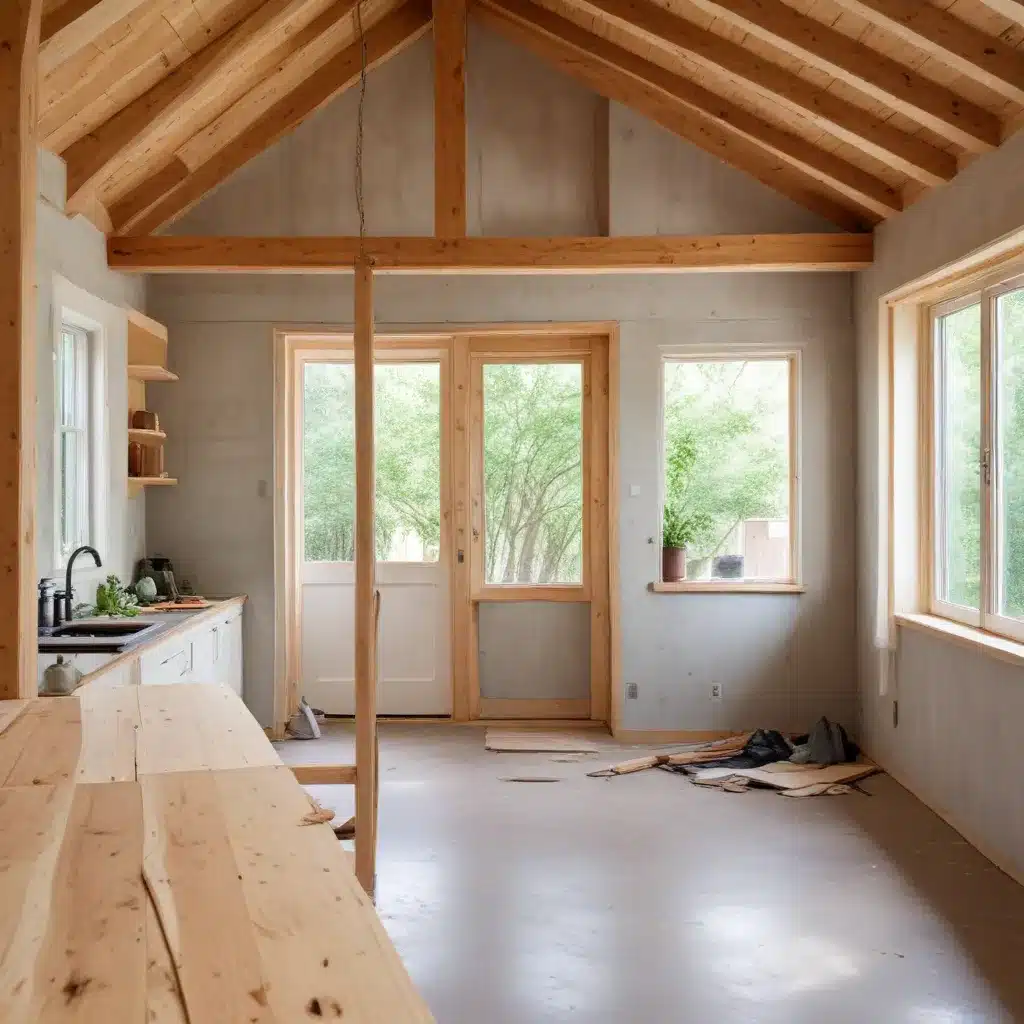
As an experienced home improvement consultant, I understand the importance of integrating sustainable practices into renovations. Whether you’re a cost-conscious homeowner, an eco-conscious citizen, or a family-focused renovator, incorporating green strategies can yield substantial benefits – from reduced energy costs to improved indoor air quality and a positive environmental impact.
In this comprehensive guide, we’ll explore a range of eco-friendly renovation techniques and design principles to help you transform your living space into a haven of style and sustainability.
Sustainable Home Design Considerations
Sustainable home design starts with the fundamentals of architectural principles and energy efficiency strategies. By thoughtfully orienting your home, selecting high-performance building materials, and integrating renewable energy sources, you can create a living space that is not only aesthetically pleasing but also environmentally responsible.
Architectural Principles
The physical layout and orientation of your home play a crucial role in its energy efficiency and sustainability. Passive design techniques can significantly reduce your energy consumption without the need for advanced technology. Consider the home’s solar orientation, strategically placing living spaces to take advantage of natural light and heat gain during the winter months. Incorporate skylights and large windows to maximize daylighting, but be mindful of the placement to prevent excessive heat buildup in the summer.
The exterior color of your home also impacts its energy performance. In warm climates, opt for light, reflective hues that can help keep the interior cooler, while darker colors work better in colder regions by absorbing heat. Landscaping choices, such as deciduous trees that provide shade in the summer and allow sunlight through in the winter, can further enhance your home’s passive design.
Energy Efficiency Strategies
Once you’ve optimized your home’s architectural design, turn your attention to energy-efficient upgrades. High-performance windows, advanced insulation, and smart thermostats can significantly reduce heating and cooling costs, potentially saving you up to 30% on your utility bills. Additionally, consider replacing fossil fuel-based appliances with energy-efficient electric alternatives, such as induction cooktops and heat pump systems.
Renewable Energy Integration
Integrating renewable energy sources, such as solar photovoltaic (PV) panels, can take your sustainable home to the next level. While the initial investment may be higher, the long-term savings on energy costs and the positive environmental impact can make it a worthwhile investment. Additionally, take advantage of any available tax credits or incentives to offset the upfront costs.
Eco-Friendly Renovation Techniques
When it comes to the actual renovation process, focus on material selection, waste management, and sustainable construction practices to minimize your environmental footprint.
Material Selection
Carefully choose building materials that are environmentally friendly, energy-efficient, and non-toxic. Look for products with recycled content, such as recycled cotton insulation or recycled glass insulation, which can help divert waste from landfills. The Kitchen Cabinet Manufacturers Association’s Environmental Stewardship Program is a valuable resource for finding sustainable cabinetry options.
Waste Management
Adopt a deconstruction approach rather than a traditional demolition. This allows you and your contractor to carefully assess which materials can be reused, resold, or recycled, reducing construction waste. Organizations like Renovation Angel and Big Reuse can help facilitate the donation or resale of your old materials and appliances, providing you with a tax write-off and ensuring they don’t end up in landfills.
Sustainable Construction Practices
Prioritize air sealing your home to minimize energy loss through cracks and gaps. Techniques like caulking, weatherstripping, and airtight drywall can significantly improve your home’s thermal performance. Additionally, the use of low-emissivity (Low-E) windows can reduce heat gain and loss, further enhancing your energy efficiency.
Enhancing Indoor Environmental Quality
Creating a healthy, comfortable, and energy-efficient living space is just as important as the exterior sustainability of your home. Focus on air quality improvement, thermal comfort and ventilation, and daylighting and artificial lighting.
Air Quality Improvement
Selecting non-toxic, low-VOC building materials and finishes can significantly enhance your indoor air quality, reducing the risk of respiratory issues and other health problems. Proper ventilation is also crucial, ensuring that fresh air circulates throughout your home.
Thermal Comfort and Ventilation
Achieving consistent temperature regulation and humidity control can improve your overall comfort and well-being. In addition to energy-efficient windows and insulation, consider heat pump systems and smart thermostats to optimize heating and cooling.
Daylighting and Artificial Lighting
Maximizing the use of natural light through strategically placed windows and skylights can reduce your reliance on artificial lighting, lowering your energy consumption. When selecting indoor lighting, opt for energy-efficient LED bulbs and fixtures that complement the natural daylighting in your home.
Landscape and Site Considerations
The surrounding landscape and site characteristics can also contribute to your home’s overall sustainability. Incorporate water conservation, biodiversity and habitat restoration, and sustainable outdoor spaces.
Water Conservation
Utilize drought-tolerant landscaping, rain gardens, and rainwater harvesting systems to reduce your home’s water footprint. Consider water-efficient fixtures, such as low-flow faucets and showerheads, to further conserve this precious resource.
Biodiversity and Habitat Restoration
Integrating native plant species and creating pollinator-friendly gardens can help support local ecosystems and provide a haven for diverse wildlife. Avoid invasive plants and opt for deciduous trees that offer shade in the summer and allow sunlight in the winter.
Sustainable Outdoor Spaces
Design green roofs, permeable paving, and shaded seating areas to reduce the heat island effect and create comfortable, eco-friendly outdoor living spaces. These features can also contribute to stormwater management and enhance your home’s overall sustainability.
By embracing these sustainable renovation strategies, you’ll not only transform your living space into a more energy-efficient, healthier, and environmentally responsible home, but you’ll also be making a meaningful contribution to a more sustainable future. Remember, even small changes can have a significant impact, so don’t be afraid to start your green renovation journey today.
If you’re ready to take the next step, head over to Reluctant Renovator to explore more renovation resources and connect with trusted home improvement experts. Happy (green) renovating!



